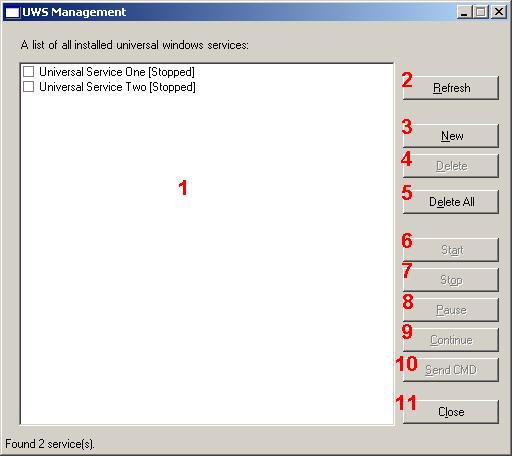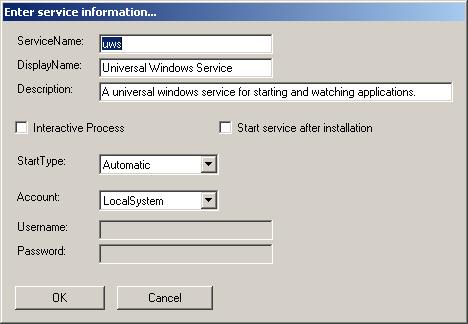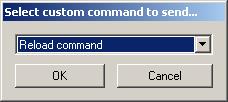UWS User Guide
Management Dialog
This management dialog will be used during installation to configure new services but you could also call this program from your start menue. You will find it at CC-SE\Universal Windows Service\Configure Universal Windows Services.
Independent of the calling way the following screen will appear:

1. List of installed services
Show a simple list of all installed universal windows services and their states. You could select more than one service and do some actions on it.
2. Refresh service list
Pressing this button would refresh the left sided service list.
3. Create new service
You could register a new universal windows service which uses the installed uws.exe as executable. The following child screen would appear where all possible setting of the service could made.

Every service need an own XML configuration file where all settings are made. When the service was started it looks for a *.config file in the installation directory with the same name as it's service name.
For example: If your service has the service name "uws1" the service looks for a configuration file with name "uws1.config" at the installation directory.
4. Delete selected service(s)
Unregister the selected universal windows service(s) as windows service from your system. Note that only the registry entry for the service will be deleted not the executable files in application directory.
5. Delete all services
Unregister all installed universal windows services from your system. Note that only the registry entries will be deleted not the executable files in application directory.
6. Start selected service(s)
Gives you the change to manually start universal windows service(s). If more than one service is selected only these service would be started which are possible to start.
7. Stop selected service(s)
Similar to number 6 you could stop universal windows service(s)) by selecting them in the left list box.
8. Pause selected service(s)
The service temporarily stop working and don't start applications or watch them.
9. Continue selected service(s)
If a service is paused you could reactivate it during this button and tell service to start working again.
10. Send custom command
Send a custom command to selected service(s), e.g. reload command which forces the service to reload configuration settings.
The following dialog to select custom command would appear:

11. Close dialog
Leaves the configuration programm and complete the installation process if it was opened there.
